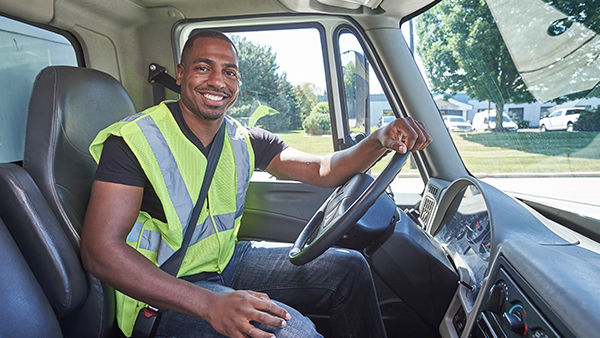The Crucial Role of Commercial Driver Road Tests
Mark Schedler, Sr. Editor - Transport
March 12, 2024

As part of the driver qualification process, private and for-hire interstate carriers must evaluate the skills of commercial motor vehicle (CMV) driver applicants.
A thorough road test and the use of best practices can:
- Exceed the Federal Motor Carrier Safety Regulations (FMCSRs);
- Reduce the risk of crashes, violations, and claims of negligence; and
- Improve retention by increasing driver skills and confidence.
Screening prospective CMV drivers for safety concerns relies on limited information. The motor vehicle record (MVR) depicts the driver’s past. However, the road test is a current evaluation of skills and deficiencies.
Carriers have up to three choices in their approach to road tests for most CMV drivers:
- Instead of conducting a road test, use the exception in 391.33;
- Meet the minimum federal road test standards in 391.31, or
- Exceed the standards with best practices.
Note: The two exceptions in 391.33 cannot be used for drivers who will pull trailers that are tankers, doubles, or triples, as well as those using the Alternative Vision Standard (391.44) for the first time. Also, keep in mind that the use of exceptions is not a valid defense in litigation.
What are the minimum road test requirements?
Per 391.31, anyone operating a CMV in an area open to public travel must be tested in a vehicle similar to the one they will be assigned before being utilized in commerce.
Drivers that need to be tested in addition to full-time drivers include, but are not limited to:
- Temporary agency drivers,
- Independent contractors leased to operate under the carrier’s authority, and
- Office employees or any other occasional drivers.
CMVs, as defined in 390.5, include vehicles such as:
- Larger pickup trucks and trailers,
- Straight trucks,
- Tank vehicles,
- Tractor-trailers,
- 9-15 passenger vans, and
- Any size vehicle hauling hazardous material that requires placarding.
A tester designated by the carrier as competent to evaluate safe driving must rate the driver’s performance on the following eight activities as required in 391.31(b):
- Performing a pre-trip inspection as required in 392.7;
- Coupling and uncoupling of combination units, if applicable;
- Placing the vehicle in operation;
- Using the controls and emergency equipment;
- Operating in traffic and while passing other motor vehicles;
- Turning;
- Braking, and slowing by means other than braking; and
- Backing and parking.
As the driver performs these maneuvers, the tester completes a scoring sheet. The road test duration must be sufficient for a proper skill evaluation. There is no minimum time standard.
The carrier can choose how detailed to make the scoring sheet. After completing the form, the tester must sign the document.
If the driver passes the test, the tester completes a road test certificate — which does have a prescribed format. One copy is kept in the DQ file, along with the scoring sheet, for the duration of employment plus three years after it ceases. Another copy is given to the driver for their records.
Exceptions to the road test
Carriers can accept the following instead of conducting a road test per 391.33:
- A copy of a commercial driver’s license (CDL) valid for the vehicle that the driver will operate; or
- A compliant road test certificate issued by a carrier within the past three years.
The exception cannot be used for drivers that will pull tankers, doubles, or triple trailers, as well as those using the Alternative Vision Standard in 391.44 for the first time,
10 best practices
Consider adopting any or all of these ten best practices to exceed regulatory minimums:
- Use only one road course applicable to the driver's operating environment.
- Prohibit the use of either exception in 391.33.
- Consider professional third-party examiners with proven evaluation skills for thorough and impartial evaluations. (See the next section on the use of third-party road testing.)
- Require evaluators of CDL-vehicle drivers to hold a CDL in case they need to operate the vehicle.
- Adopt a standardized scoring sheet and require completion during versus after the test.
- Document the basis for deeming an evaluator competent, such as in an appointment letter.
- Evaluate testers for the consistent application of standards and to guard against bias.
- Ensure testers explain what the driver can expect before starting and only give instructions and limit comments to avoid distractions during the test.
- Conduct remedial training to correct road-test deficiencies if the driver passes the test.
- Perform road tests regularly after hire or before a transition, such as before:
- Returning to work from an extended absence,
- Being assigned to a new vehicle or operation type,
- Operating in winter or mountainous terrain, and
- Assuming duties as a driver-trainer.
Which carriers can benefit from third-party road-testing services?
Carriers with an adequate staff of skilled personnel that can be deemed competent to conduct road tests may have the resources for road testing. However, many carriers have had difficulty hiring drivers, much less having an extra two or three that can promptly be assigned to road tests.
Carriers that can benefit from a professional road-testing service include those:
- With a high volume of new-driver hiring,
- Without a dedicated resource to conduct road tests,
- That require a road test for drivers before they resume driving after an accident or incident, and
- That could benefit from external support to manage the driver road-testing process.
In closing, carriers should not settle for only meeting minimum road test standards in this era of nuclear verdicts and driver shortages. Juries and federal auditors expect carriers to exceed the regulations by adopting best practices as part of their policies and procedures.